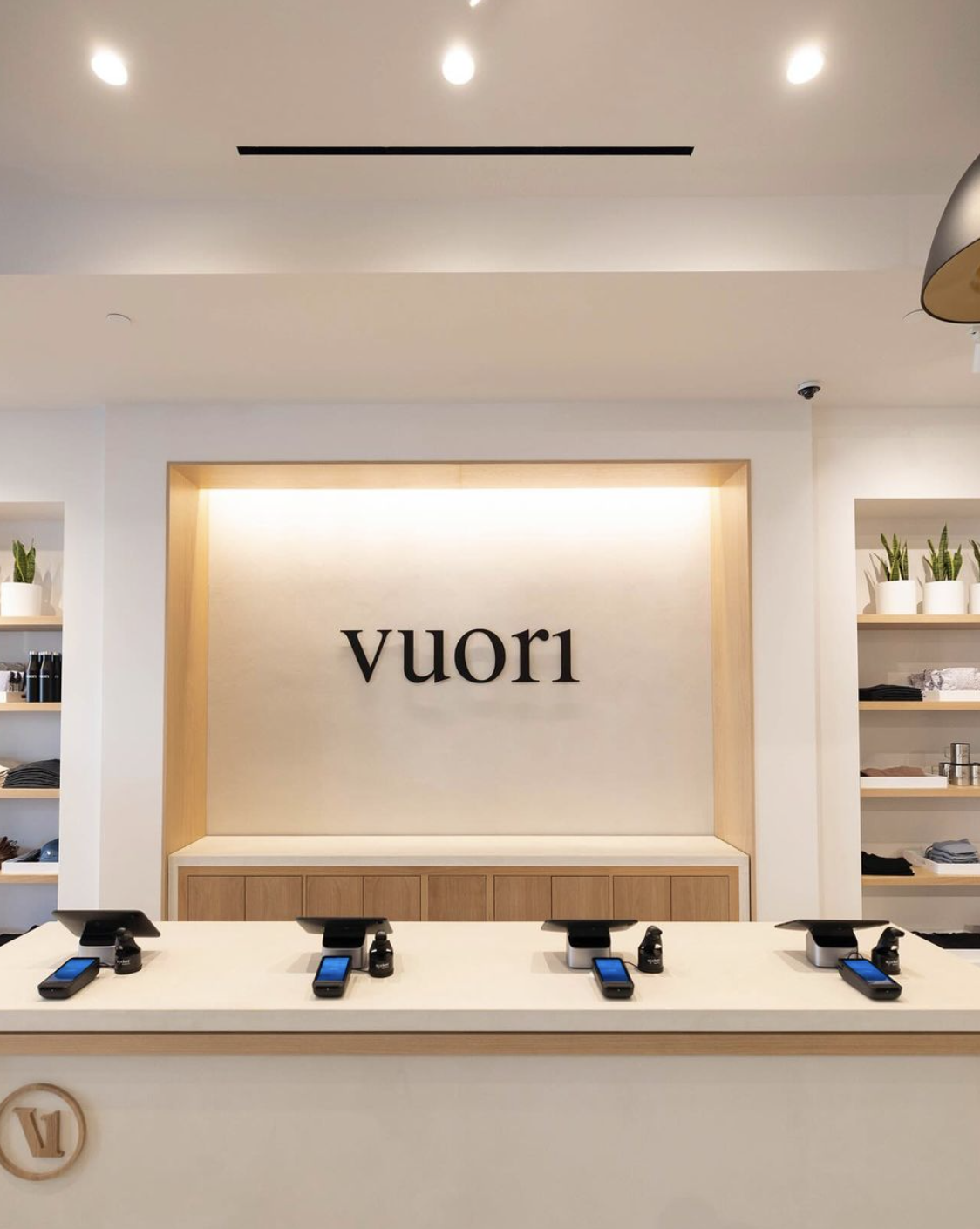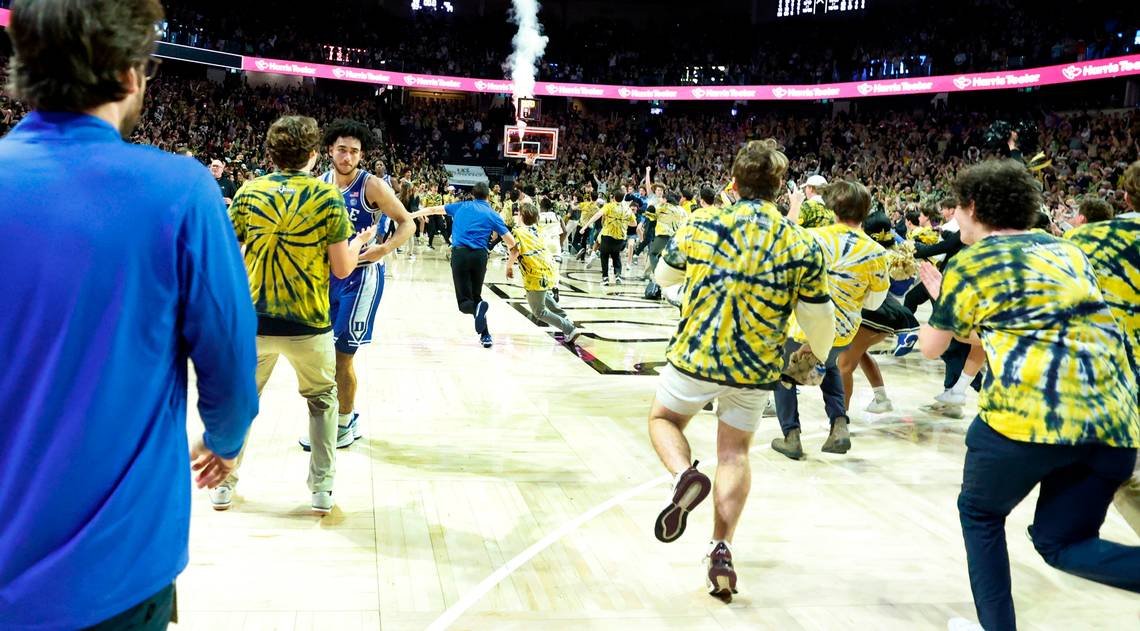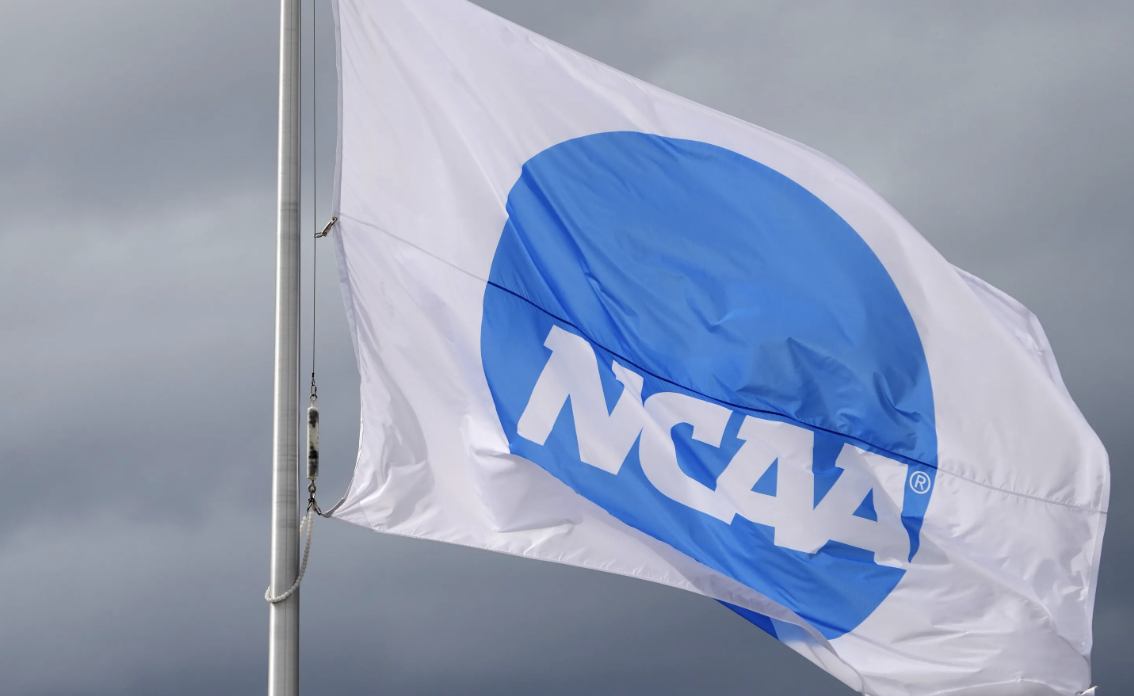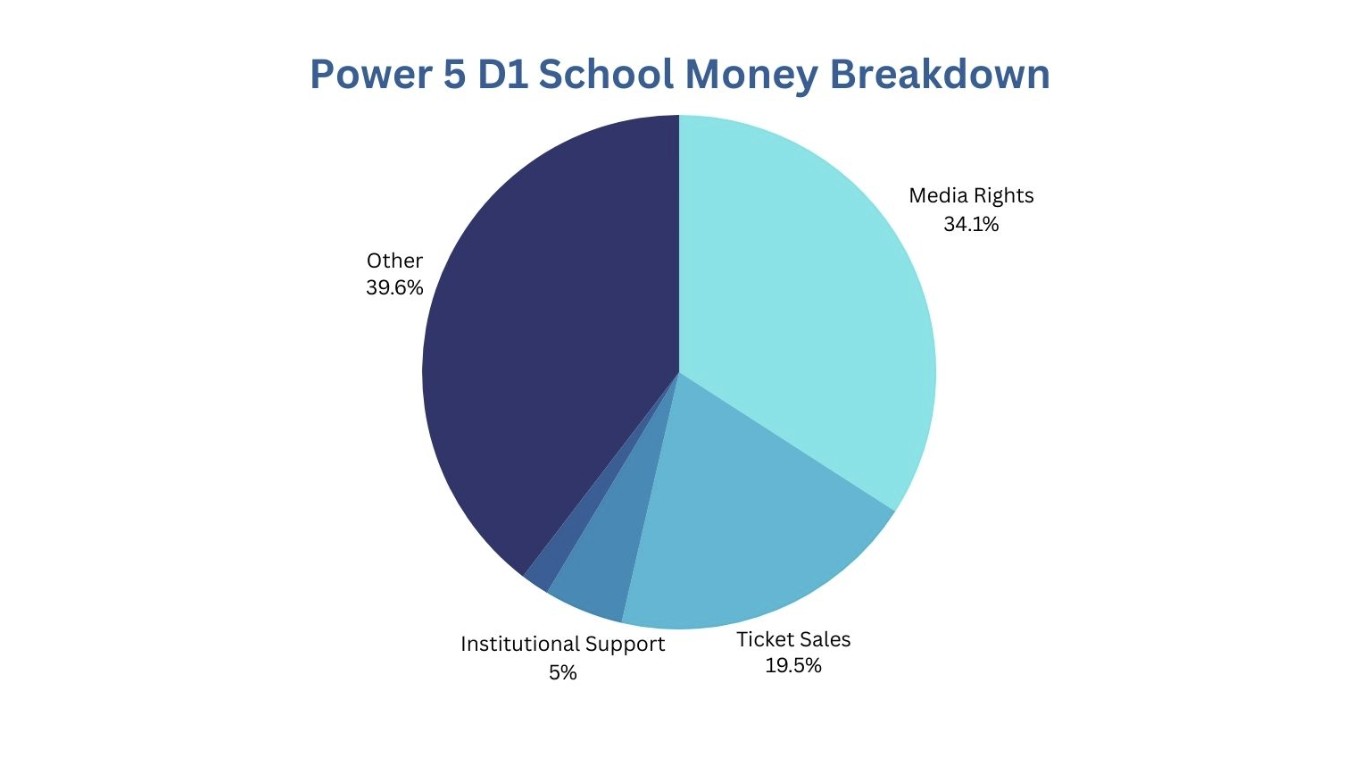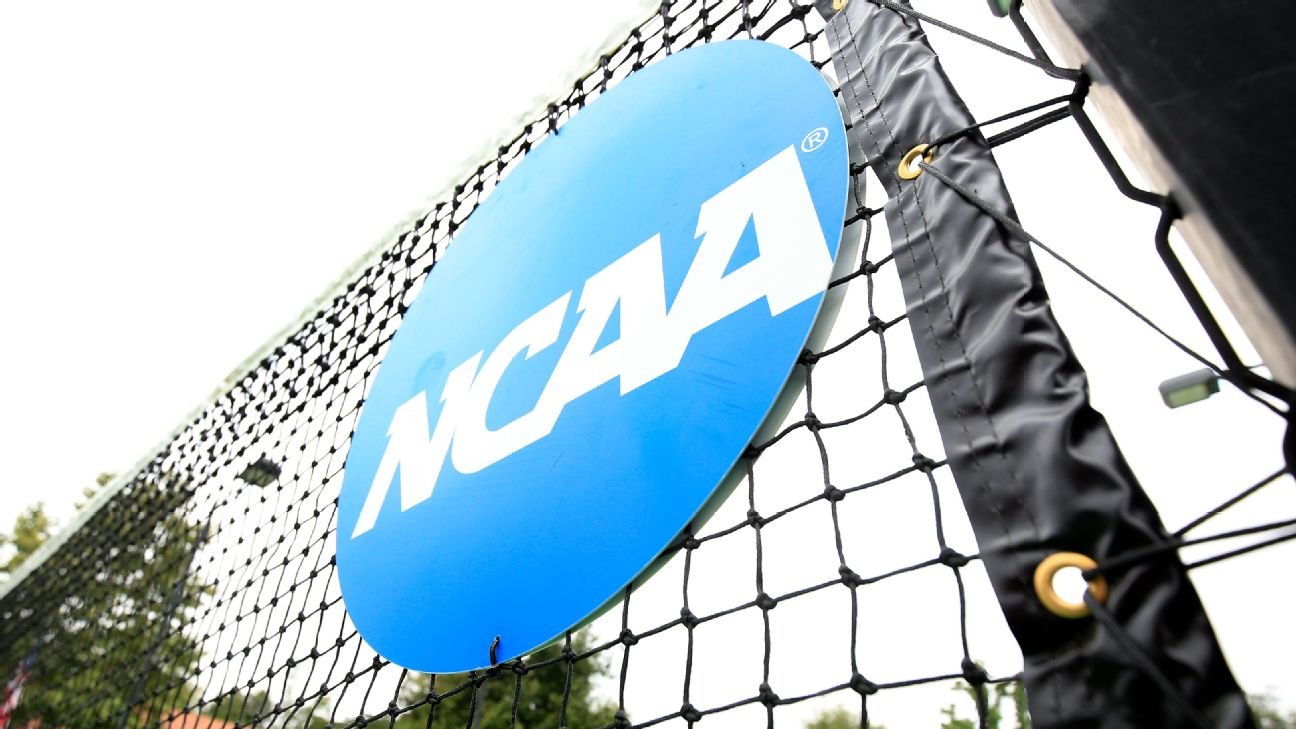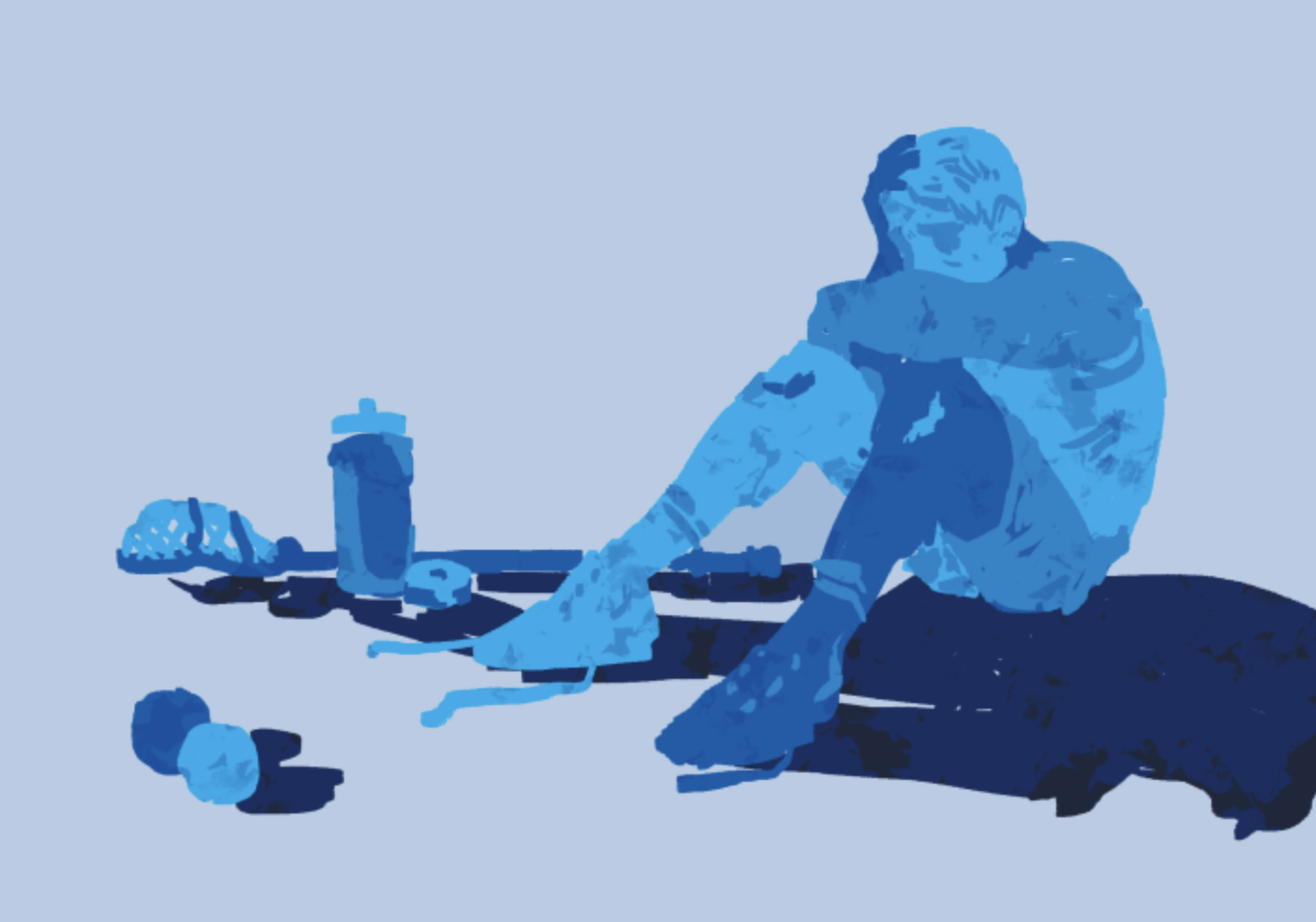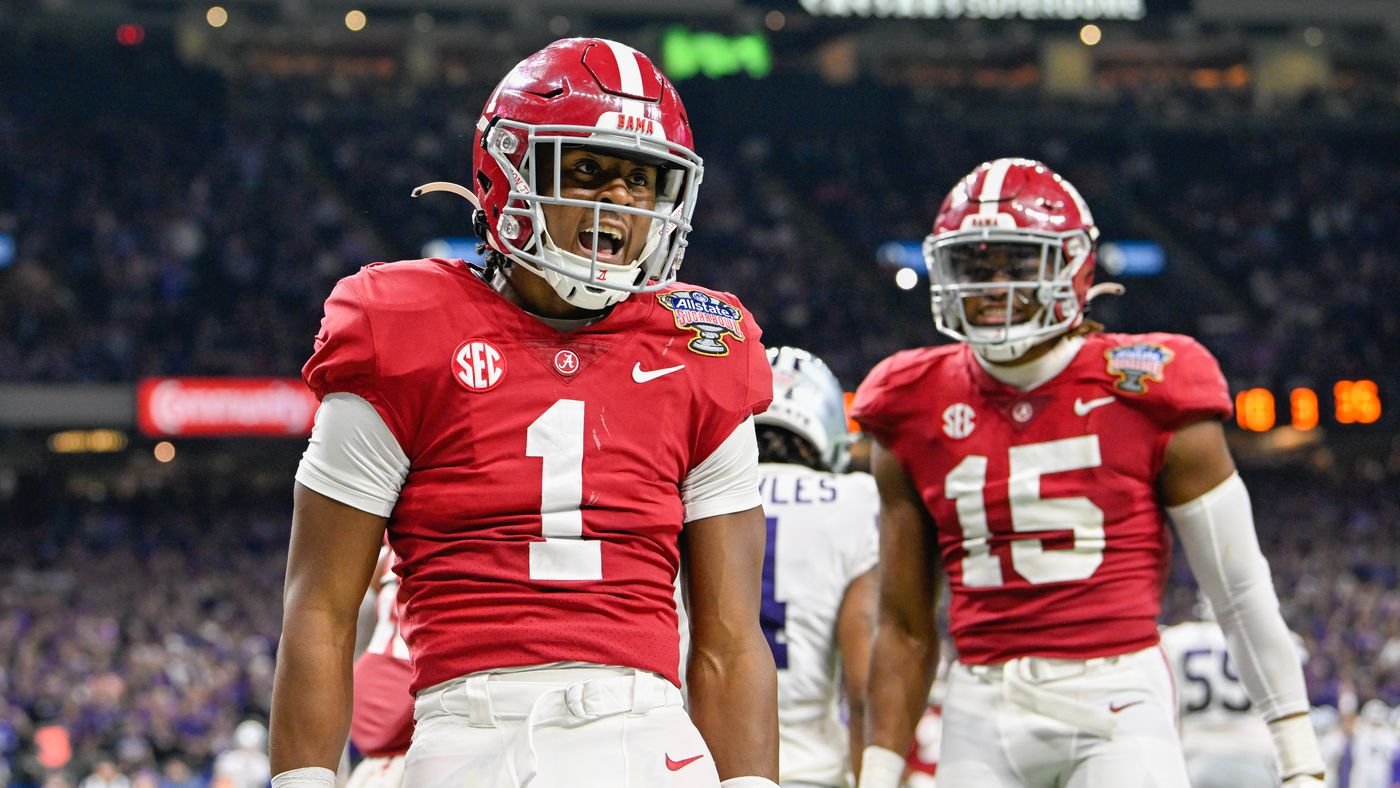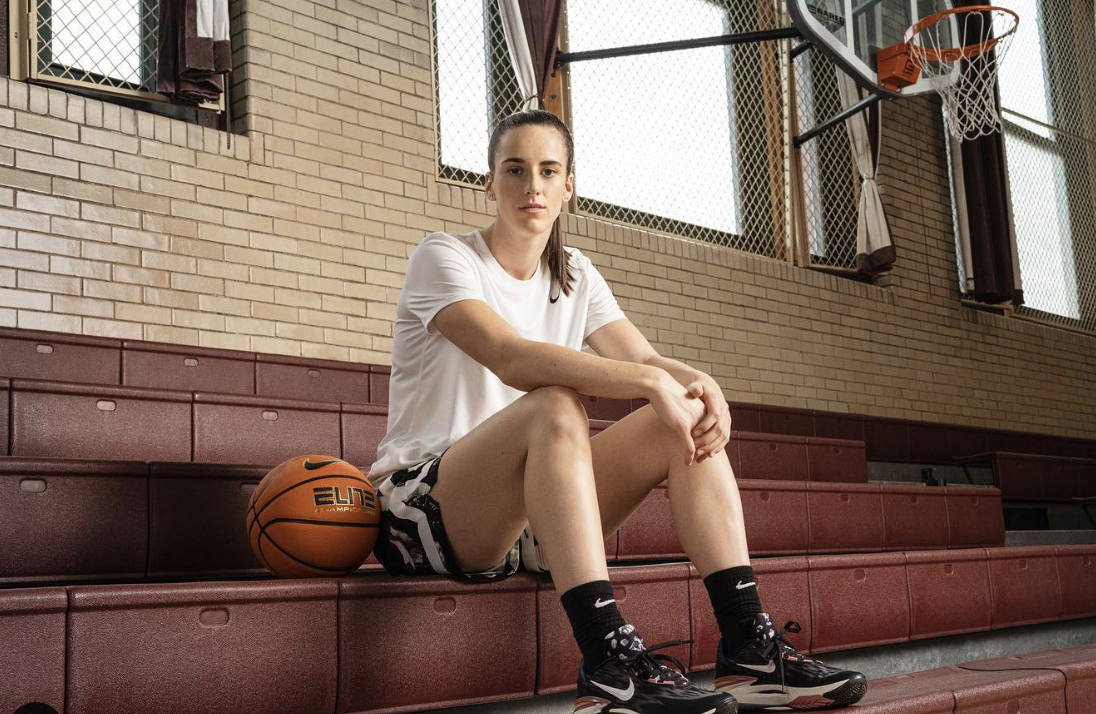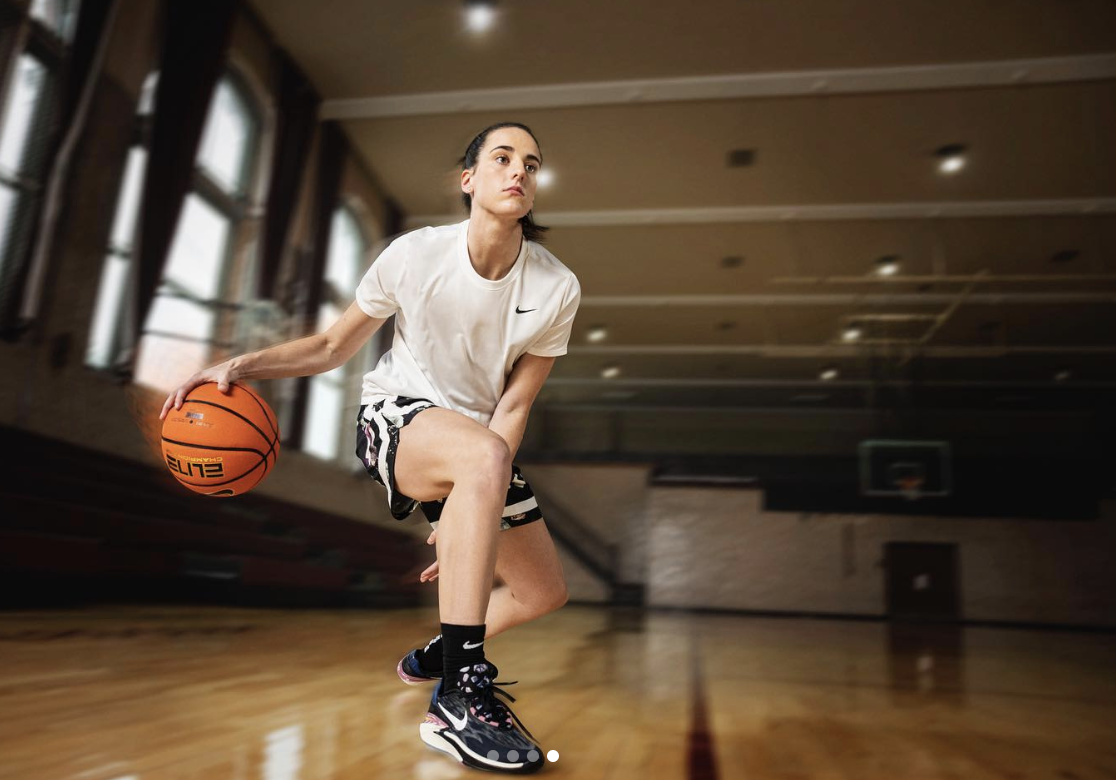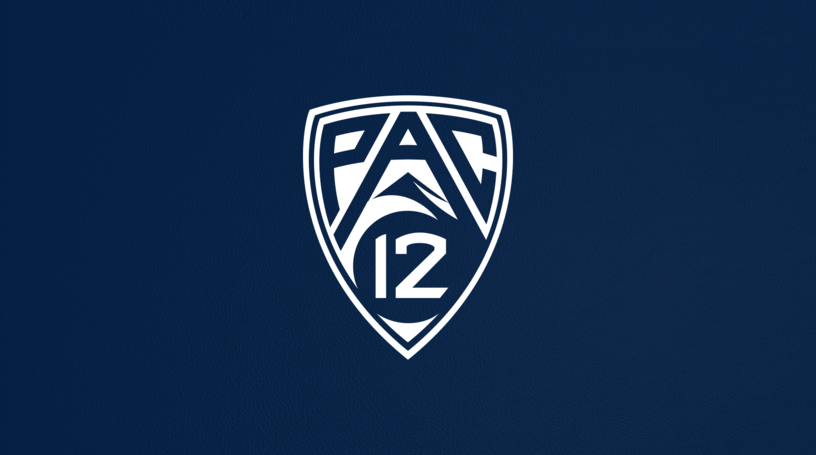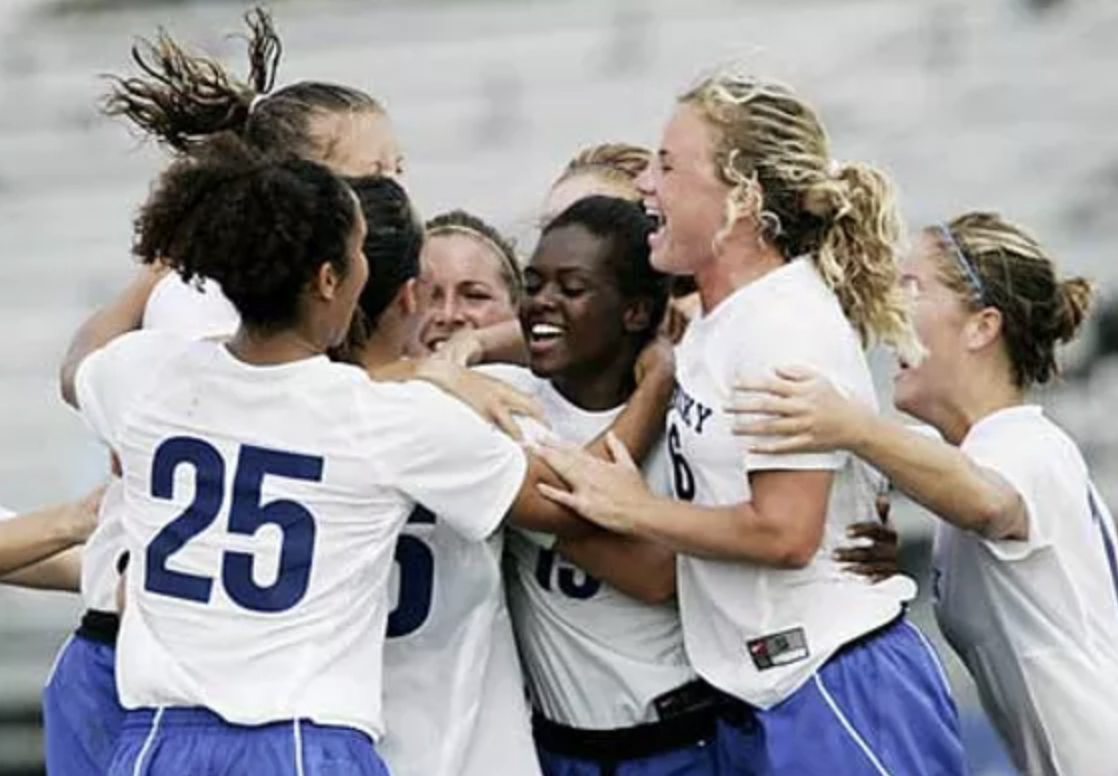The Impact of NIL on Corporate America: Who’s Capitalized the Most in Recent Years
Written By: Jonathan Merlin
Over the last calendar year, the NIL industry has grown by nearly 150%. While athletes have done their best to capitalize on the new NIL legislation, brands are also realizing what NIL can do for them. So, which industries have capitalized the most, how have they done it, and how has NIL impacted their business overall?
To start, 70% of NIL deals are in the Apparel & Accessories industries. However, these deals are not headlined by the typical athletic apparel giants like Nike and Under Armor but rather by smaller brands trying to do something unique in order to compete. Brands that aren’t household names, like Rhoback, can partner with college athletes to specifically target a younger audience and get their product in front of a wider market. While no numbers are certain, it is reported that Rhoback grew its sales from $20 million in 2022 to $50 million in 2023, partly due to its success in the NIL industry.
There have been two emerging strategies that brands have used to capitalize on NIL. The first and most obvious is targeting a single big-name college athlete to headline a new product release or endorse the brand. The best example of this strategy is LSU star Livvy Dunne signing a new multi-million dollar deal with Vuori. By targeting Livvy, Vuori can connect with her over 12 million social media followers and reach the ever-so-valuable Gen-Z demographic. Back in 2018, Vuori made $30 Million in revenue. Now, Vuori reported that its revenue tripled to $90 Million in part thanks to its partnership with Livvy. This partnership underscores the effectiveness of leveraging influencers with substantial social media followings to drive brand growth and sales in the competitive athleisure market.
The second strategy is the mass participation strategy, where companies create a large portfolio of brand ambassadors rather than focusing on a single athlete. This strategy focuses on building a network of many athletes from different schools and demographics to reach a wider audience. For example, Adidas has partnered with nearly 50,000 student-athletes nationwide to promote their brand and give every student-athlete an opportunity to benefit from NIL. Back in the first quarter of 2023, the company reported a loss of $24 Million. A year later (Q1 2024), the company reported a profit of $182 Million. While NIL deals are not the only driver of this drastic turnaround, they certainly played a crucial role. This strategy is also popular in the fast food industry. For example, Raising Canes, popular in many college towns across the country, has prioritized NIL deals to foster community engagement and grow its brand visibility. By partnering with student-athletes in each college town, Canes ensures visibility in some of its most valuable markets.
Through these two strategies, brands across the country have used NIL deals to double or even triple their sales. Here at MK Hustle, we proudly represent extraordinary talent across numerous college sports and help them partner with brands that align with their interests and beliefs. With the proven success of NIL deals for companies, more and more brands are trying to get involved in the space, and we are seeing success in matching MKH clients with those companies.
Ahead of March Madness - is it time to ban court storming?
Written By: Tex Greene
If you’re a fan of a high school or collegiate basketball/volleyball team, then court storming is all the rage. You get to race down from your seats/bleachers and run onto the court, either to emphasize this is your house or that you reign superior over the other team. It’s a way fans can connect with the players that played their hearts out to earn victory. If you’re a coach, manager, or player, however, you may have the opposite opinion.
Court storming through the lens of players and coaches is particularly dangerous. Pretend you’re in enemy territory, and you’re upset by a rival. The fans will be delirious, not thinking through their actions. With hundreds if not thousands of bodies all descending on one place, an accident is just waiting to happen. Nowhere was this more apparent than Wake Forest’s upset of Duke earlier this year.
As a result of court storming, Duke big man Kyle Filipowski suffered an ankle injury due to Wake Forest fans storming the court. He hobbled off the court with help, and thankfully, the injury wasn’t too serious. However, before that diagnosis was reached, people had the opportunity to reflect on whether court storming could cause serious damage.
Yes, there’s the fact that court storming is a little bit disrespectful to your opponent–but that’s not the main reason why people want it gone. Court storming should be banned because of the possibility of disaster. Filipowski isn’t the only player ever to be negatively impacted by court storming; he’s just the most recent example, and plays for one of the best teams in the nation.
March Madness is the most popular basketball event in America. People are tuning in from all over the country and the world to watch, and arenas will be sold out to watch 64 teams battle it out for a national championship. If you’re paying for a good seat at an arena for March Madness, then chances are you’re very passionate about your team. What happens when court storming inevitably occurs during the tournament, and something worse happens? What happens when McNeese upsets Gonzaga in the first round, their fans storm the court, and Ryan Nembhard rolls his ankle? The NCAA would have a PR disaster on their hands, and who knows how that could spiral.
Currently, the NCAA isn’t even thinking about banning court storming, and it hadn’t been a seriously discussed issue in the past until the Filipowski injury. However, this fluke accident from a month ago could be exactly what’s needed to get the ball rolling on some change.
The Implications of the NCAA’s Ongoing Lawsuits
Written By: Jonathan Merlin
When the NCAA started allowing student-athletes to benefit from their NIL, they failed to consider many of the possible consequences and liabilities they would be opening themselves up to. These oversights have led to 2 critical lawsuits that the NCAA has been forced to fight. The decisions and results of these suits will have a seismic impact on student-athletes across the county.
The first case currently being fought in California is Hosue vs. NCAA. In this antitrust case, the NCAA has $4 Billion in liability for not compensating three classes of NCAA student-athletes. The case hopes to redefine NIL to include “broadcast deals, game promotions, and team apparel.” Back in November, Judge Claudia Wilken established that the three classes in the case are:
1. Players who played before June 1, 2021, and missed out on potential NIL compensation
2. Male players who played before June 15, 2016, and missed out on potential NIL compensation
3. Female players who played before June 15, 2016, and missed out on potential NIL compensation
If Judge Wilken rules in favor of the players, the NCAA would be forced to rethink its current compensation rules and find a way to get creative with how it intends to reimburse $4 billion in damages without going bankrupt. The case will not be tried until 2025, but there are significant financial implications for MKHustle clients and student-athletes nationwide. In the most extreme case, this ruling could allow student-athletes to benefit from broadcasted commercials, video games like the new NCAA 2025, and jersey sales.
Also, in California, the NLRB filed a case against USC, the PAC-12, and the NCAA seeking to establish student-athletes as employees. Earlier this year, a judge ruled that the student-athletes are, in fact, employees of USC and the NCAA is a joint-employer. This grants USC student-athletes the ability to unionize and ultimately collectively bargain with the school over issues like salary, health benefits, and academic resources. With this precedent, student-athletes across the country will try and start fighting for their own unions with their schools. This ruling will fundamentally change college sports as athletes will begin to be treated more like NFL or NBA players than college amateurs. This will affect college sports in a myriad of different ways, specifically NIL, as athletes would essentially have no limitations to sign deals and gather endorsements as long as they are within the new CBA agreement. While this case only has $180,000 in liability, the nationwide implications of this decision are worth way more than the monetary value of the case.
This is yet another example of how the NIL industry is constantly changing. We at MKHustle pride ourselves on remaining up-to-date on everything NIL to put our clients in the best position to succeed. As these changes continue to come into effect and more doors continue to open for student-athletes, MKH is always here to guide you through your journey
How Big Time Colleges are Missing Out on a Key Revenue Source
Written By: Tex Green
It’s no secret that colleges and their athletic programs make a crap-ton of money. It’s why their teams can be so successful, their facilities state of the art, and have all the other benefits they do. But, where does that money come from? Some of it comes from where you might imagine, but other places may come as more of a surprise. However, after learning more about this subject, what really surprises me is where the money isn’t coming from. Let me explain:
Let’s start by looking at the schools with the most exposure and the largest amount of money: Division One Power 5 Schools. Power 5 means the five largest conferences in college sports, those being the ACC, Big Ten, SEC, Pac-12, and Big-12. These schools generate the majority of their money from media rights (TV deals). Their next biggest source of revenue is donor contributions, followed by ticket sales, and then other small amounts from institutional support and student fees. Here’s a pie chart depicting this:
That other section of the pie chart encompasses donor contributions and university endowment. I’d like to credit Dominyck Bullard and his newsletter, “Power Play” for digging up these stats through Axios.
These colleges are bringing in billions of dollars to their programs every year, and they’re doing perfectly fine. Yet, they’re still neglecting one of their biggest opportunities to make even more money…and that opportunity is social media.
Let’s take SEC football for example. Alabama football’s Instagram has 1.3 million followers, Auburn has 343,000, LSU has over 1 million followers, Georgia has over 1 million followers, Tennessee has 605,000 followers; you get the picture. Yet, they aren’t taking advantage of monetizing these accounts.
There are so many ways that these teams could monetize their fans online. They could create premium content online only available to fans who pay, for example. They could collaborate with brands to do sponsored posts, for which they would be paid a pretty penny given their follower base. They could also create online campaigns using features like auto-DMs to reach out to their fans in order to get them to buy tickets, merchandise, or anything else affiliated with the program that they’re selling. They could even sell those various products and merchandise on Instagram, making sure their full fanbase is engaged. Either way, the returns from social media advertising and marketing could create a new share of that pie chart much larger than anything envisioned before. Yet, teams still aren’t doing it. Either there’s a rule prohibiting them from doing so, or they just haven’t figured it out yet. Whatever the case, it’ll likely change soon.
Teams may not be marketing on social media and doing sponsorships, but college athletes most definitely are! NIL has totally opened up that door, and we here at MK Hustle are making sure our college clients are maximizing their earnings. If you want to learn how you can maximize your brand with us, don’t hesitate to reach out.
NCAA Makes a Splash: Is Change Coming to NIL Soon?
Written By: Jonathan Merlin
Since its birth in 2021, the NIL industry has grown to nearly $1.2 Billion. However, that money isn’t shared equally. It is estimated that deals for athletes in College Football and Men’s College Basketball make up about 75% of the total NIL market.
While College Football and Men’s College Basketball are the largest revenue generators for athletic departments, there is an argument to be made that NIL money should be shared equally across all student-athletes. While certain sports bring in more revenue, that shouldn’t be a barrier preventing other athletes from profiting off their NIL.
So, what is the NCAA going to do to address this issue?
In early December, the NCAA announced a new plan to allow schools to set up “NIL Trusts,” that brands, schools and alumni would put money towards that would go directly to student-athletes. While setting up a trust would be voluntary for each school, after the plan was released, several athletic directors, including Trev Alberts of Nebraska, and Gene Smith of Ohio State, expressed their support for the new plan. With the support of big Power 5 schools like Ohio State and Nebraska, the plan could become widely accepted across the country within 2024 and we can begin to bridge the gap in NIL across conferences, universities, sports and even genders.
This plan comes right as many were thinking the NCAA would take a different direction. Many were expecting the NCAA to allow student-athletes to become employees of their school, authorizing them to receive a salary. This new plan provides us with a clearer vision of where the NCAA wants to take NIL in the future.
So what will the effects of this new plan be?
The primary beneficiary of this new plan are female student-athletes. Currently, there are no rules ensuring the equality of NIL deals for men and women. However, one new aspect of this plan is that each trust would be subject to Title IX regulations, meaning that the money must be shared evenly between male and female athletes. So, with Ohio State’s trust estimated to be about $15 Million, female student-athletes in Columbus are due for a payday.
Ohio State is just one example of how female student-athletes could be in for an NIL windfall.
With change coming around the corner, having someone in your corner is as important as ever. The NIL space is constantly changing and this is yet another twist that we at MKHustle are here to help you navigate. For both male and female athletes alike, MKH is here to help you build meaningful connections with valuable brands and maximize your NIL.
Mental Health in Sports, and Where We Stand Today.
Written By: Tex Green
The mental aspect of sports is just as important as the physical ability to play the sport. As baseball legend Yogi Berra said, “Baseball is 90% mental. The other half is physical.” While this may add up to 140% and not be statistically accurate, he raises a good point about how important the mental aspect of sports is. Yet, until recently, the mental aspect of sports and of athletes had been unrecognized and uncared for. Mental health and focus when playing a sport is especially important for student-athletes in college, whose brains aren’t fully developed yet.
So, why has it taken so long to get to where we are today?
Well, there wasn’t much of an emphasis on mental health (especially in collegiate athletics) until the 21st century. Only ~7% of high school athletes go on to play at any level in college, and that 7% consists of the best youth athletes in the country. Getting to the top doesn’t consist of load management; it takes putting in more work than everyone else around you, and going the extra mile. The grueling life of college sports and the commitment required doesn’t go hand-in-hand with taking time off and making sure you’re in the right space mentally. As the NCAA said, “Student-athletes, coaches and staff tend to minimize mental disorders or psychological distress because of the expectations of strength, stability and "mental toughness" inherent in the sports culture. As a result, student-athletes often avoid disclosing a mental health concern, especially if the perceived negative consequence includes being rejected by teammates or coaches due to the disclosure.” However, once research had been done that showed the mental aspect of sports played a part in performance, it was then taken far more seriously.
What It Looks Like Today Compared to the Past
In order to help student-athletes, many college programs have counselors that student-athletes can see for help to work through mental issues. A counselor can definitely help, as according to UPMC HealthBeat, “Student-athletes are more likely to burn out, sustain injuries, and experience a serious mental health crisis without help. In addition, team success is more likely to suffer when athletes don’t get the resources they need to thrive.” However, while these individuals help tremendously, it's up to a program and its culture to influence the well-being of student-athletes. As coaches become more and more aware of the mental health problem, there’s more they can do to help reduce the stigma around mental health and create better team culture.
There’s still a lot of work that needs to be done. This survey conducted by the NCAA in 2022 gives us a modern snapshot of where student-athletes stand in regard to mental health. One key takeaway from this study is that less than half of student-athletes surveyed said they would be comfortable seeking help from a mental health provider, even if provided for them. This further shows the stigma around mental health in college sports that still exists today. However, as more and more awareness is given to this issue, we can slowly rid ourselves of the stigma, and make sure all athletes are fully addressing their mental health.
The Bama Effect: What Schools are doing to help student athletes secure NIL deals
Written by: Jonathan Merlin
Ever since NIL deals were legalized by the Supreme Court in the summer of 2021, schools around the country have tried to leverage NIL into helping them recruit student-athletes.
This summer, Alabama opened their Advantage Center, the first and largest facility dedicated to helping student-athletes maximize their Name, Image and Likeness. With the help of Learfield, a collegiate sports marketing firm, the Advantage Center is a one-stop shop for Alabama student-athletes to secure NIL deals and learn how to manage and maximize their brand. With Learfield providing all the staffing and expertise, Alabama student-athletes are able to work with and learn from some of the best sports marketers in the country.
While this is great for Alabama and their student-athletes, what does it mean for the rest of college football?
College recruiting is an arms race. It used to be that the schools with the best facilities and amenities won the top recruits. Now, with NIL weighing ever more importantly in the minds of young student-athletes, schools will have to invest in their NIL programs in an attempt to stay competitive.
As usual, Alabama just set the standard. Now everyone else is playing from behind. That’s the Bama Effect.
With Alabama putting the world on notice, the other powerhouse schools are starting to fight back. Back in April of this year, UGA announced plans for their own in-house NIL facility through their partnership with Altius Sports. Just like the Alabama facility, UGA plans to provide an all encompassing NIL experience for their student-athletes. As the UGA athletic director, Josh Brooks said, “it is crucial that we remain at the forefront of Name, Image and Likeness,” explaining the importance of keeping pace with Alabama in the NIL world.
Recently, Michigan partnered with Learfield, the same company Alabama partnered with, for their Advantage Center. While nothing has been announced yet, it can be assumed that Michigan is working on developing their own form of an in-house NIL facility.
However, some schools are opting for a different route. Duke partnered with INFLCR, a Teamworks product, to launch the Blue Devil Exchange. The new INFLCR software allows businesses to search a database of Duke student-athletes and contact those with whom they want to partner with. Furthermore, the software helps student-athletes learn about the NIL world and how to best prepare themselves to manage their brand after school.
While these resources are certainly helpful, schools can’t, and will never be able to represent student-athletes. And, even with the benefit of all of these resources, contract and marketing negotiations are always challenging and something not fit for a student-athlete to tackle alone.
An example of this happened just last year to University of Miami Quarterback Kyle Van Dyke. The QB had a $1 Million NIL deal with Jimmy Johns that fell through at the last minute due to contract negotiation issues. The need for a professional advisor to guide a student athlete through these relatively uncharted waters leaves a void in the market that agencies like MK Hustle can effectively fill.
How Caitlin Clark Transformed Women’s Basketball
Written by: Tex Greene
55,646
That’s the number of people who went to Kinnick Stadium, the arena for the University of Iowa’s football team. Except, people weren’t there to see football.
Everyone was there to watch a women’s basketball game.
Nebraska’s volleyball team set an attendance record for any sport just a few months ago, with 92,003 fans attending their game. However, the 55,646 people was the most for a women’s college basketball game. The sport is on the rise, and Iowa’s star player, Caitlin Clark is at the forefront of women’s basketball.
If you asked basketball fans a few years ago if they watched women’s college basketball or WNBA games, the overwhelming response would be no. The reason why? The women’s game didn’t feature flashy highlights, dunks, or athleticism. It was boring. Yet, in the same way Steph Curry captivated an entire generation not by his athleticism but with his lights-out shooting and dribbling, Clark inspires the next generation of female hoopers. She stands only six feet tall, but looms larger than life over her opponents. Her NIL value during April of 2023 was just over six figures, around $192,000. After March Madness, it was well over $700,000; almost one for every Instagram follower she currently has.
So how did she do it?
Clark grew up in a large household with two brothers. The eldest of the siblings, Blake, would go on to play college football for Iowa State University, so it’s clear sports was in the family’s DNA. Additionally, Caitlin’s dad played college basketball at Simpson’s college, a cousin of her’s played at Creighton, and two uncles in the family played college basketball and football.
Caitlin tried to keep up with her brothers, and like most younger siblings, this gave her a huge advantage over her peers. Additionally, it developed a deep sense of competitiveness that still hasn’t left her to this day. Her first time ever playing basketball was in a boy’s YMCA rec league (there were no girls’ leagues in the mid-2000s), and her dad wasn’t training her to be a prodigy: he just wanted her to have fun. Clark, however, did more than just have fun, as she barely missed in that first game. In 2nd grade, she dominated so much in a boy’s state AAU tournament that other parents protested, claiming girls shouldn’t be allowed on boy’s teams because they were too good.
Basketball wasn’t Clark’s only sport; she played volleyball and soccer among others. But, basketball was without a doubt the sport she excelled at the most. At the beginning of 6th grade, Clark joined the All-Iowa Attack AAU team, one of the best in the state of Iowa. She was already one of the best prospects in her age range, and she quickly found herself playing up many years. Not only did she draw the attention of her local high school coaches (an eighth grader playing against high school seniors was extremely impressive), but she drew attention from college coaches as well. It’s no surprise that at Dowling High School, Clark spent four years on varsity and already was a national sensation as a freshman.
Kristin Meyer, who was hired as the head coach of the women’s varsity basketball team during Clark’s freshman year, was not expecting the amount of attention that came her school’s way. “I started getting calls from coaches, Division One coaches, before her freshman year of high school. And they had seen her play,” said Meyers. “They were predicting her to be top level. Some of them said that, even as a freshman in high school, they could’ve played on their D1 team. She sees the game differently than anyone I’ve ever met. The game is slower for her.”
By her sophomore year, Clark was the most sought after recruit in the entire nation. Talented as ever, Clark’s side gig was starting on the women’s varsity soccer team her freshman and sophomore year (while being named All-State!) before she quit to focus on basketball. It was only a formality for her to finish out her high school career, but she still did so in style. As a sophomore, Clark averaged 27.1 points, 6.5 rebounds, 4 assists, and 2.3 steals per game, while leading her team to a 20-4 record and a deep run in the state playoffs. Her junior year, Clark led the nation in scoring with 32.6 points per game, and dropped 60 points in a game! 60! She was named Iowa Gatorade Player of the Year in both her junior and senior seasons.
Clark committed to the University of Iowa for college, wanting to take a program to new heights and stay close to home. She didn’t hesitate to immediately make an impact on the team. Kathleen Doyle, the previous year’s Big 10 Player of the Year, had just graduated and was drafted into the WNBA, meaning there were some big shoes to fill. Thrust into the starting point guard role, Clark dropped 27 points, 8 rebounds, 4 assists, and 3 steals against Northern Iowa in his first ever college game. She didn’t stop there, as she only scored under 10 points once the entire season, and led Iowa to a 20-10 record. With averages of 27 points, 7 rebounds, and 6 assists, Clark not only won the Big 10 Freshman of the Year Award in 2021, but the Dawn Stanley award given to the best guard in the entire country.
Across women’s college basketball, Clark was already a sensation; however, most of the country had yet to find out about basketball’s next big star. Clark’s freshman year was 2020-21, meaning it was still the middle of the COVID-19 pandemic and fans couldn’t attend the games in-person. As restrictions loosened for her sophomore year, Clark continued her rampage across women’s basketball, and Iowa fans buckled up for the ride.
Upping her averages to 27 points, 8 rebounds, and 8 assists, Clark went from Big 10 Freshman of the Year to Big 10 Player of the Year in 2022 as a sophomore. The team’s record improved to 24-8, but surprisingly, they were bounced out of March Madness in the second round by Creighton. It was still a successful individual year, but not enough to satisfy Clark. She made it clear her goal was to bring Iowa to heights they’d never reached before, and the second round of March Madness was not that. The loss lit a fire under Iowa’s belt, which stayed through them during the offseason and the 2022-23 season. “I think we had that fire of getting upset early from last year, I think that’ll really drive us, but you know, we really want to reach the Final Four,” said Clark. “That’s our goal. We know it takes a little luck, a good draw, a lot of hard work, but we’re going to do everything we can to get there.”
During the 2022-23 season, with COVID restrictions completely gone and a locked-in team, Iowa sold out every women’s basketball game, and the hype around Clark grew larger nationally. She averaged nearly identical stats to the previous year, but won the Naismith Player of the Year award, given to the best player in women’s college basketball. She also won the Dawn Staley award for the third year in a row, having led her team to a 31-7 record when it was all said and done. After all the fanfare of the regular season, however, it was time to avenge last year’s loss to Creighton.
The first round against Southeastern Louisiana wasn’t much of a fight, but in the next round, against Georgia, it was much closer. Georgia played stifling defense, but Iowa grinded it out and won by eight, avoiding their fate from the previous year. Against Colorado in the next round, the game was once again close, but Iowa pulled away at the end, thanks to 31 points from Clark. After that, the Madness truly began.
Against Louisville, Clark had one of the best games of her life, with a 41 point-10 rebound-12 assist triple-double. To do that in the elite eight was absolutely crazy, as no one had ever had a 30-point triple-double in March Madness, let alone a 40-point triple-double! In what was supposed to be another close game, Iowa won by 14 points, and accomplished their goal of reaching the Final Four.
If college basketball fans and the entire country hadn’t known of Clark before, they knew of her now. Everyone had their brackets filled out, and it was time to see how far Clark and Iowa could go. As amazing as they were though, no one expected Iowa to make it to the national championship game.
Iowa faced off against the University of South Carolina, one of women’s basketball’s biggest powerhouses. They hadn’t lost a single game the entire year (and for a good portion of the previous year), and were coached by Dawn Stanley (you know, the one who they named the award Clark won three times after). Clark was the only reason Iowa had a chance, and it showed during the game.
Thanks to South Carolina’s stifling defense, Clark and one of her teammates, Monika Czinano, accounted for 59 of Iowa’s 77 points. Everyone expected South Carolina to pull away at some point in the game, but thanks to 41 points from Clark, they hung around, and somehow survived, 77-73. They made it to the national championship, and now, if you watched basketball at all, you knew who Caitlin Clark was. She had just become the first player to ever drop back-to-back 40-point games in March Madness, and had led Iowa to their first national championship game in program history.
Unfortunately, the storybook ending didn’t continue, as LSU did overcome Clark’s 30 points in the national championship game. Still, the effect 2023’s March Madness had on women’s basketball can’t be overstated. Over 12 million people tuned in to watch the national championship: the most watched women’s basketball game of all time, college or WNBA. The level Clark had just elevated the sport to had never been done before, part of the reason why her NIL Valuation went from $192,000 to $700,000. It’s the reason she’s doing commercials with Jake from State Farm, is sponsored by Nike, and holds her own basketball camp. It’s why Steven A told Clark that he doesn’t know whether to call her the female version of Steph Curry, or to call Steph Curry the male version of her. It’s why 55,646 people filled up Kinnick Stadium to watch her play, and why the entire country will be watching to see how she one-up’s herself for her senior year.
55,646. That’s a lot of people.
What Avenues Exist for Athletes to Continue Their Playing Careers Post-College?
Written by: Tex Greene
For many people, making it to college athletics is the dream. To be at a big time program, you’re required to be at the top of your class at your sport, dedicate yourself to that sport often from an early age, navigate the recruiting process, and be a solid student. But, what opportunities are there for these gifted college athletes to further their playing careers post-college? Let’s break down the options for five of the most prominent sports in the NCAA: Basketball, Football, Gymnastics, Lacrosse and Track and Field.
Basketball has arguably the most possible options post-college. Of course, the best of the best declare for the NBA Draft, and a lucky 60 are selected by teams. Many that go undrafted will play professional basketball overseas. The demand for overseas basketball is high, as there are pro leagues in many foreign countries. Some of the more notable ones are Japan’s B-League, the Chinese Basketball Association (CBA), the EuroLeague, Australia’s National Basketball League (NBL), and so many more. Top players in these leagues can make 6-7 figures, making the country switch very profitable. However, those still focused on chasing their NBA dream often play in the NBA’s G-League. The minor league affiliate of the NBA, players from the G-League can be called up to NBA teams on ten day contracts, or can be on a two-way contract where they play for an NBA team and their G-League affiliate at the same time. However, while the G-League has a high level of competition, it pays far less than its rival leagues overseas. For those looking to gain exposure for a spot overseas or in the G-League, there are semi-pro leagues, such as the American Basketball Association (ABA), East Coast Basketball League (ECBL), and The Basketball League (TBL).
Football doesn’t have as many options as basketball, unfortunately. After all, American football is just that…American. The NFL is where the most talented football players compete, but after the prestige of the NFL, playing options drop off quickly. NFL Europe is the NFL’s equivalent to the NBA G-League, but unfortunately, this is really all that’s overseas in the way of American football. There are some smaller football leagues in America (most notably the XFL), but none that pay anything near the NFL, or offer the exposure and competition that the greatest football league in the world does. There’s no American football in the Olympics either, unlike Gymnastics.
For Gymnastics, being a professional means competing in the Olympics; that’s it. Most gymnasts start very young, and end up competing in the Olympics before they’re college-aged or during their college years. Gymnasts at the cream of the crop previously had to make a difficult decision: turn pro and compete in the Olympics, or compete in college. However, there is now a path for college gymnasts to compete in college, and then turn around and attempt to qualify for Olympic competition. Unfortunately, aside from the Olympics, there aren’t any professional gymnastics leagues or competitions.
Lacrosse has quite a few professional options post-college. There are two major lacrosse leagues in America: Premier League Lacrosse (PLL) and the North American Lacrosse League (NALL), which is indoors. There was another league called Major League Lacrosse (MLL), but it merged with PLL a few years ago. Overseas, the options for Lacrosse are increasing as well. There’s a European Lacrosse Federation that is increasing the game’s exposure in European countries; however, this is more tournament based as opposed to a season. There are professional leagues in Canada, Australia, and Asia, making it possible to be involved in Lacrosse all over the world. However, the salaries aren’t that high, so while it’s easy to continue playing the game after college, doing so for a living is far more difficult.
Lastly, there’s track and field. Track and Field is an Olympic sport, and that’s where the best of the best competition takes place. There’s also the Diamond League, which is an annual competition for the most elite track and field athletes. It’s the best non-Olympic track competition there is for professionals, and after that it drops off pretty quickly. The top few runners in the entire world are able to make over six figures, but after those few people, the rest of Olympic runners make on average less than $15,000 per year running. That $15,000 is not from a salary they receive signed by a team, but rather comes in the form of prize money for winning competitions. Only 20% of the best American track and field athletes ever end up making more than $50,000 per year, meaning it’s difficult to make a career purely off running races. Aside from basketball, there aren’t many opportunities in these other sports to make a serious living post-college, which makes it all the more important collegiate athletes maximize their earnings with NIL. And, there’s no better place to get started with that than MK Hustle.
What Does the Future of the Pac-12 Mean for NIL and Student-Athletes?
Written by: Tex Greene
The poor Pac-12. In what seems like a matter of weeks, the college athletic conference went from one of the most respected on the west coast to barely having any schools left. Despite their geographic location, USC and UCLA left the Pac-12 for the Big Ten. In addition, Oregon and Washington both decided to leave the Pac-12 for the Big Ten. Then, adding insult to injury for the Pac-12, four teams left the conference for the Big 12: Colorado, Arizona, Arizona State, and Utah. If you’re counting at home, the Pac-12 is now down to the Pac-4.
The reason each of these schools left the Pac-12 is quite obvious: money. The Big Ten recently agreed to a new media deal with Fox, CBS, and NBC worth around $7.5 billion over seven years. During the 2021-22 school year, the Big Ten sent $58 million to every school in its conference, while Pac-12 schools were receiving around $30 million from their conference. Both of those numbers are expected to increase in given years, but still, it was too much money for the athletic programs to ignore.
From the student-athlete side, there are two perspectives to look at here. The first is that of the student-athletes at California, Stanford, Oregon State, and Washington State. What’s going to happen to the athletic programs of these schools? Can they credibly play one another in various sports if there are four schools in their conference? Either the Pac-12 is going to have to find some new schools to join the league or…what exactly? Will those four schools just cease to have athletic teams? Even if they do have games and seasons to play, are student-athletes going to transfer to schools in the larger conferences? More money from TV deals will eventually trickle down to the players, making them wealthier. According to surveys done by Bill Carter, a NIL consultant and educator, 67% of student-athletes who were considering transferring said NIL would play a role in their decision. The support a school offers in how to manage NIL deals also plays a huge role in the retention and recruitment of student-athletes.
The other perspective to look at here is the student-athletes of the emerging super conferences. The greater exposure, NIL deals, and competition are a big plus. But for the schools like USC and UCLA, this could pose some geographical problems. Conference games are the most commonly played in any team’s schedule, and for west coast teams joining the Big Ten, they’ll have to charter a lot of flights to get to games. The schools have the money for it, but this means increased jet lag and travel time for athletes, which has been shown to have a negative correlation with athletes’ academics. Plus, less time for practice, sleep, and academics could eventually lead to worse performance in competition, possibly diminishing the value of having a super conference with all the best teams.
So many questions with only speculation as an answer loom over the Pac-12 and Big 10. Will the Pac-12 be able to survive, even thrive with the loss of all its teams? Could this bring more money and glory to the remaining teams and their student-athletes? On the flip side, is there going to be any money left for the four teams? Will anyone care about the conference? Is its demise inevitable?
As for student-athletes in the now Big 10, will the pros of money and larger NIL deals outweigh the cons of loss of sleep, practice, and study time? Again, only time will tell, but it’s interesting to follow. The future of NIL and the NCAA is being shaped right before our eyes, and MK Hustle has a front-row seat watching history being made.
MKH Moment: Allyse Volpe
Written by: Talia Elizabeth Barras
Since 2021, the new NCAA regulations have given student athletes the opportunity to profit from their name, image, and likeness. This recent development has opened up numerous opportunities for college athletes to make money through endorsements, sponsorships, and other opportunities. Allyse Volpe, a current client of MK Hustle and a softball player at UCF has fortunately been given the opportunity to build her brand through NIL.
Allyse is a standout softball player who plans to take advantage of NIL opportunities offered to her. With the help of Matt Kahn, the founder and CEO of MK Hustle and partner, Steve Denker, Allyse can achieve these goals. Most recently, the MK Hustle team helped Allyse become a brand ambassador for Fitbiomics to promote their product, Nella Probiotics. As a student athlete, Allyse wants to ensure her playing performance is maximized during every season. She is currently injured and is doing everything in her power to recover in a timely manner. Fitbiomics will help her reach her potential in that the probiotics will help her maintain an overall healthy lifestyle. Allyse’s platform has allowed her to advocate for causes she cares about, such as health awareness.
Thus far, Allyse’s experiences with the NIL have been positive. Being a student athlete at UCF, their softball team tries to create a positive culture that promotes NIL deals. These deals are 100% negotiable and can be made personal. For example, deals are made so that every student athlete can provide their own input when negotiating a deal. Overall, Allyse believes that the NIL has been a beneficial change for college athletics. It has allowed her to profit from her hard work and talent. NIL has also taught her to be empowered and to have control over her own image.
A student athlete can also be one of the most challenging yet rewarding experiences in a person’s life. Balancing academics and athletics can be a difficult task, but it can also lead to opportunities such as developing valuable life skills. Allyse manages her NIL opportunities and school by prioritizing her time and by creating a schedule that works for her. She acknowledges that she must be efficient with her time, which means avoiding distractions and making sacrifices when necessary. With that being said, being a student athlete is also incredibly rewarding. Softball provides a sense of purpose and belonging to Allyse. She has learned the value of teamwork, communication, and leadership.
Overall, the new NCAA regulations, allowing student athletes to profit from their name, image, and likeness has had a positive effect on Allyse’s life. She has learned the importance of discipline and hardwork, which has been very rewarding for her. She highlights that there are many rewards and benefits from these changes in the college sports industry and believes that future generations of college athletes should take advantage of these opportunities.
One Year of NIL
One Year of NIL
Today marks the one year anniversary of the implementation of NIL. 60% of D1 athletes do not get scholarships for playing sports. Even the ones that get scholarships cannot often pay for things normal college students can pay for like going out with friends. Allowing college athletes to prosper off of their name, image and likeness has been a great thing. Colleges and universities have been making billions of dollars off of their student athletes since the beginning of time. It’s about time college athletes benefit from the buckets of money they are generating for their schools. Sure there needs to be more regulation around “pay for play” which flies in the face of the spirit of NIL, but overall, NIL has been a great thing for college athletes.
When NIL was implemented, many thought that only the top male athletes in college football and college basketball would prosper. That concern has not materialized. It’s great to see a female gymnast from LSU, twin female basketball players from Fresno State and a female college volleyball player from the University of Sioux Falls make very good money off of their name, image and likeness.
To our clients... thanks for entrusting us with the opportunity to shephard your personal brands and try to broker brand partnerships for you that fit with your respective brands you are trying to build. We take this responsibility very seriously and we love what we do. Here’s to a great year 2!
